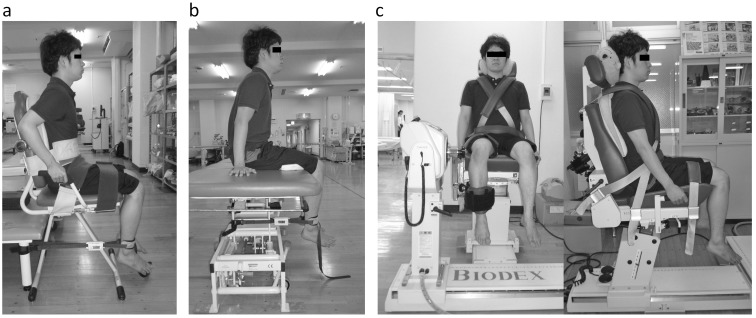Fig. 1.
The three conditions used in the study to measure isometric knee extension strength. (a) Belt-stabilized hand-held dynamometry (BSHHD) with body stabilization, (b) BSHHD without body stabilization, (c) gold standard isokinetic dynamometry (GS) view from the front and side. Subjects were seated with their hips and knees at approximately 90° of flexion. (a)(b): The belt-stabilized hand-held dynamometry (BSHHD) sensor-fixing belt was located at a level of three fingers above the malleoli. (a): Subject’s stabilizing straps were applied across the abdomen and pelvis to suppress the anterior superior iliac spines on both sides and on both thighs. Hands held on to the chair handles. (b): No stabilizing strap was used. Subjects placed their hands on the table. (c): Subject’s stabilizing straps were applied across the chest, pelvis to push the bilateral anterior iliac spines, and one of the thighs. Hands held on to the chair handles.

